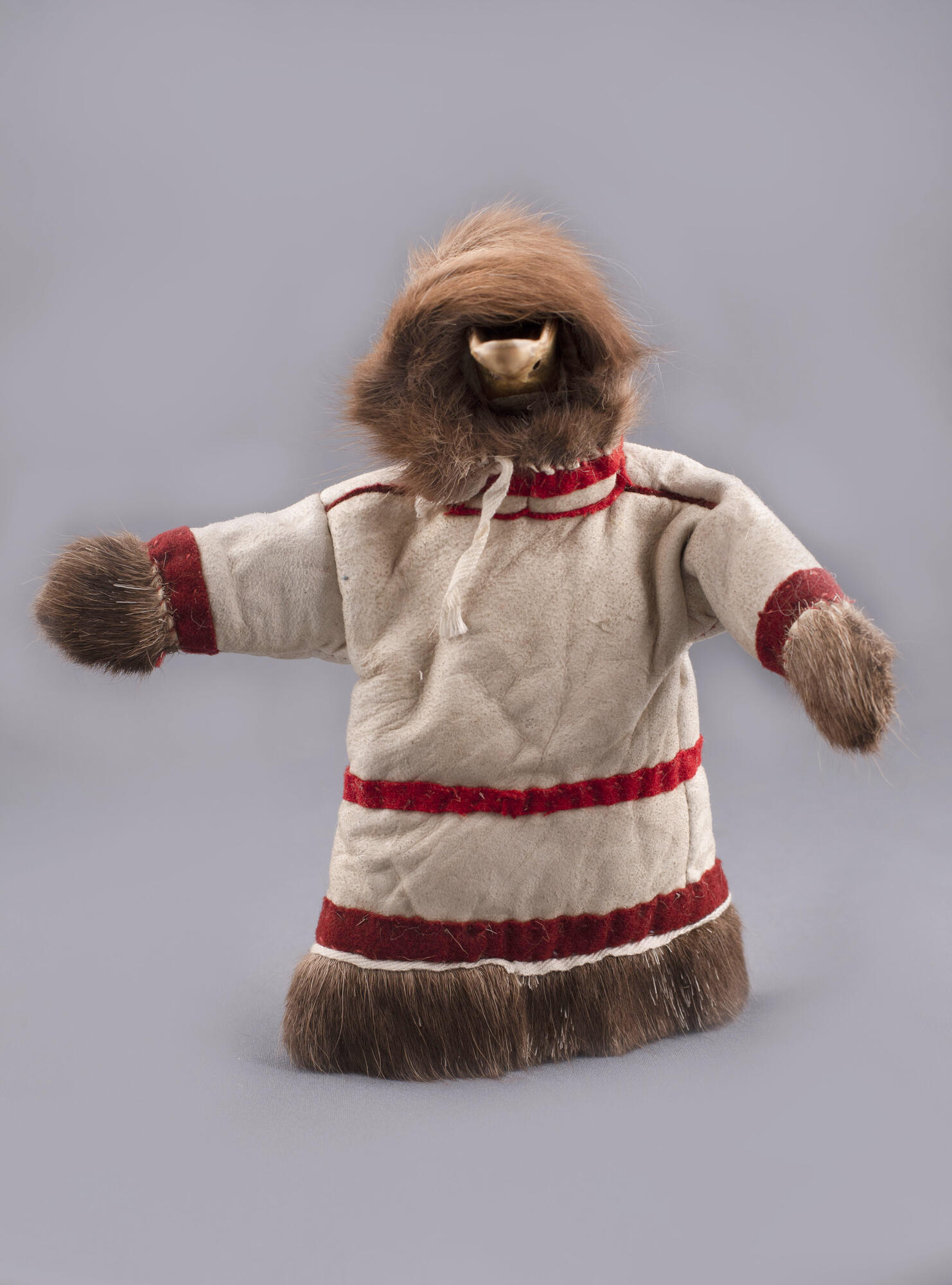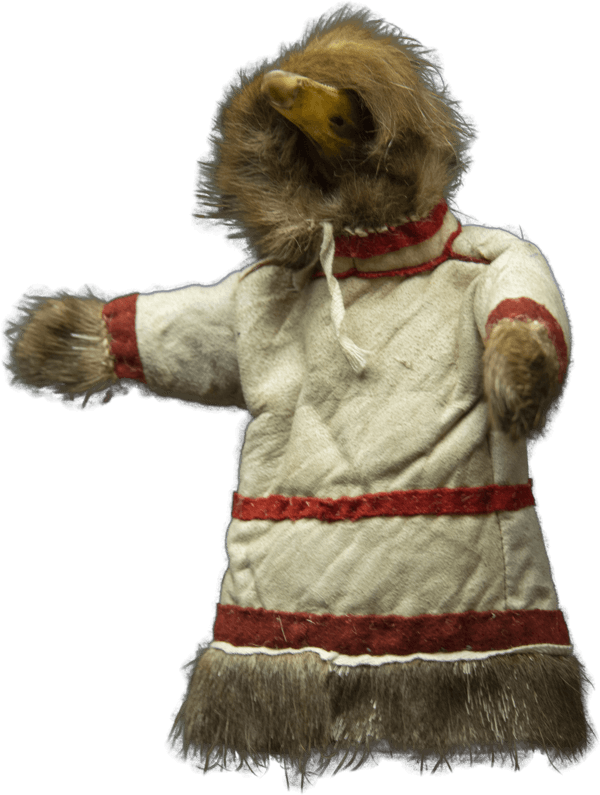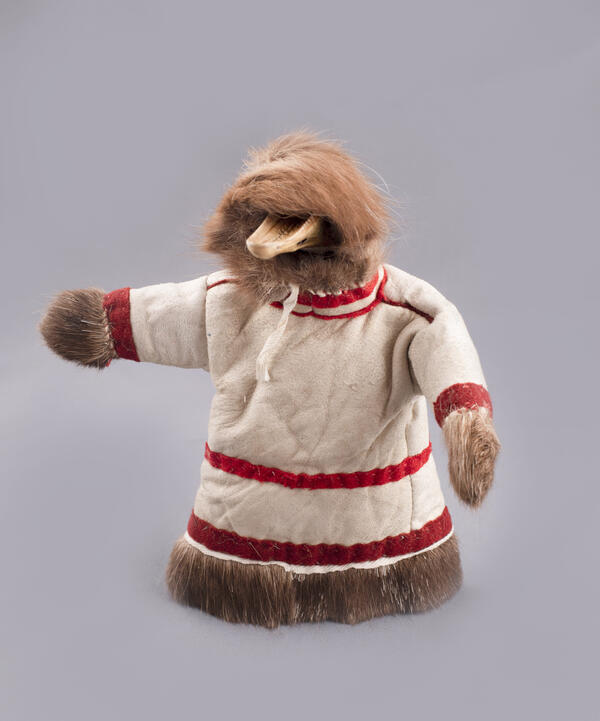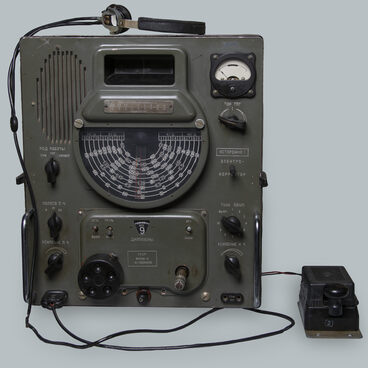The Nenets people taught their children to work from an early age: boys’ and girls’ games imitated real household activities. Children’s toys were made of wood, reindeer bones, pieces of reindeer fur, and scraps of cloth.
The soft nuhuko dolls, around 10–15 cm tall, were sewn by girls from the age of five or six and dressed in their national costumes.
The heads of the dolls were made of upper parts of goose beaks for male dolls, duck beaks — for female dolls, and those of small waterfowl — for baby dolls.
The doll’s body was rolled up in a “skirt” made of a piece of drape or woolen cloth, tied to the base of the upper bill, and attached to the head. The doll was dressed in a specially sewn small-scale model of a man’s or woman’s clothing. The “woman” doll could also have braids made of cords or sinew with beads strung on them.
There were whole families of nuhuko dolls; chums, tableware, weapons, boats, and other necessities were made for them.
This doll’s head is made of a swan’s upper bill with a piece of forehead skin; it has no arms or legs. The doll is dressed in a fur malica; its cut quite accurately reproduces the cut of this masculine garment. The malica is sewn with cotton thread and decorated with strips of red cloth.
The “malcha” malica refers to items of traditional Nenets clothing for men. There is a Nenets riddle about it: “You go in one hole, and out of three holes”.
It is a wide, done-up, slightly flared-down shirt, mid-shin long, with the back longer than the front. It is made of neblui (dark reindeer skins), sewn with fur on the inside.
At the end of the sleeves, mittens made of reindeer leg skin were attached. A rectangle of 10–15 cm was sewn into the wrist area. A hand would pass freely through the gap between the mitten and the rectangle. The hood of a cape form was sewn onto the malica; it could be easily removed and thrown back.
In warm weather, a cloth or light fabric cloak was usually worn over the malica; in cold weather — a fur sokuy.
A malica was girded with a beaded or leather belt decorated with bone or metal plaques.
The hem was decorated with a 15–18 cm wide strip of dark autumn reindeer skin, with fur on the outside. This strip on the top, at the junction with the malica, was trimmed with a white 1 cm band of kamus (deer shin skin) and thin cloth strips. A festive malica was decorated in this place with a strip of fur mosaic, and the cloak was beautifully embroidered with patterns.
The soft nuhuko dolls, around 10–15 cm tall, were sewn by girls from the age of five or six and dressed in their national costumes.
The heads of the dolls were made of upper parts of goose beaks for male dolls, duck beaks — for female dolls, and those of small waterfowl — for baby dolls.
The doll’s body was rolled up in a “skirt” made of a piece of drape or woolen cloth, tied to the base of the upper bill, and attached to the head. The doll was dressed in a specially sewn small-scale model of a man’s or woman’s clothing. The “woman” doll could also have braids made of cords or sinew with beads strung on them.
There were whole families of nuhuko dolls; chums, tableware, weapons, boats, and other necessities were made for them.
This doll’s head is made of a swan’s upper bill with a piece of forehead skin; it has no arms or legs. The doll is dressed in a fur malica; its cut quite accurately reproduces the cut of this masculine garment. The malica is sewn with cotton thread and decorated with strips of red cloth.
The “malcha” malica refers to items of traditional Nenets clothing for men. There is a Nenets riddle about it: “You go in one hole, and out of three holes”.
It is a wide, done-up, slightly flared-down shirt, mid-shin long, with the back longer than the front. It is made of neblui (dark reindeer skins), sewn with fur on the inside.
At the end of the sleeves, mittens made of reindeer leg skin were attached. A rectangle of 10–15 cm was sewn into the wrist area. A hand would pass freely through the gap between the mitten and the rectangle. The hood of a cape form was sewn onto the malica; it could be easily removed and thrown back.
In warm weather, a cloth or light fabric cloak was usually worn over the malica; in cold weather — a fur sokuy.
A malica was girded with a beaded or leather belt decorated with bone or metal plaques.
The hem was decorated with a 15–18 cm wide strip of dark autumn reindeer skin, with fur on the outside. This strip on the top, at the junction with the malica, was trimmed with a white 1 cm band of kamus (deer shin skin) and thin cloth strips. A festive malica was decorated in this place with a strip of fur mosaic, and the cloak was beautifully embroidered with patterns.





